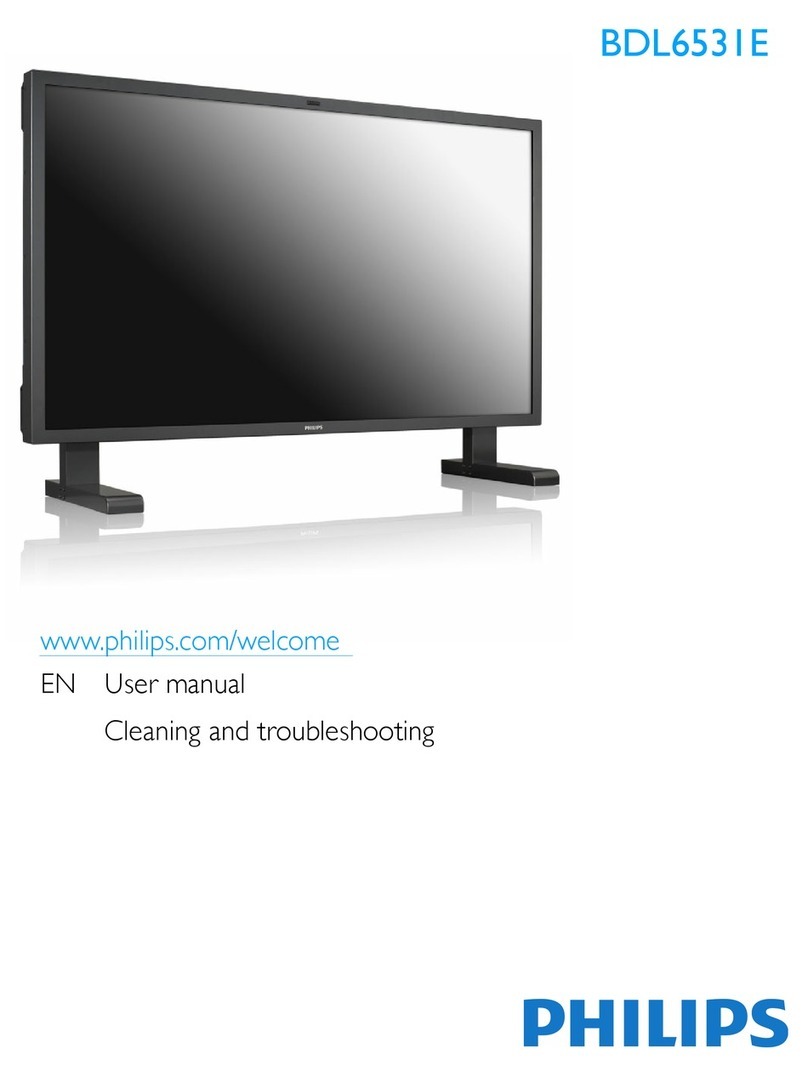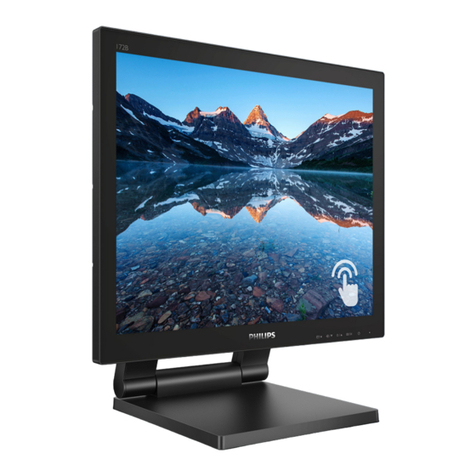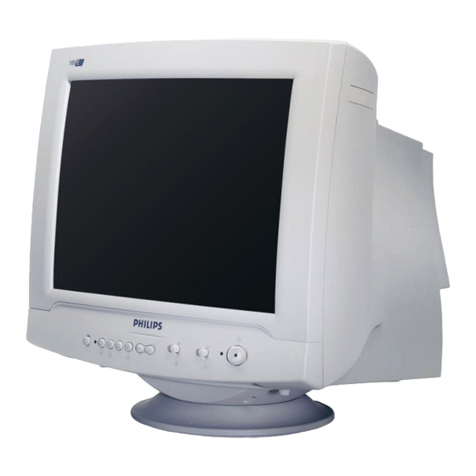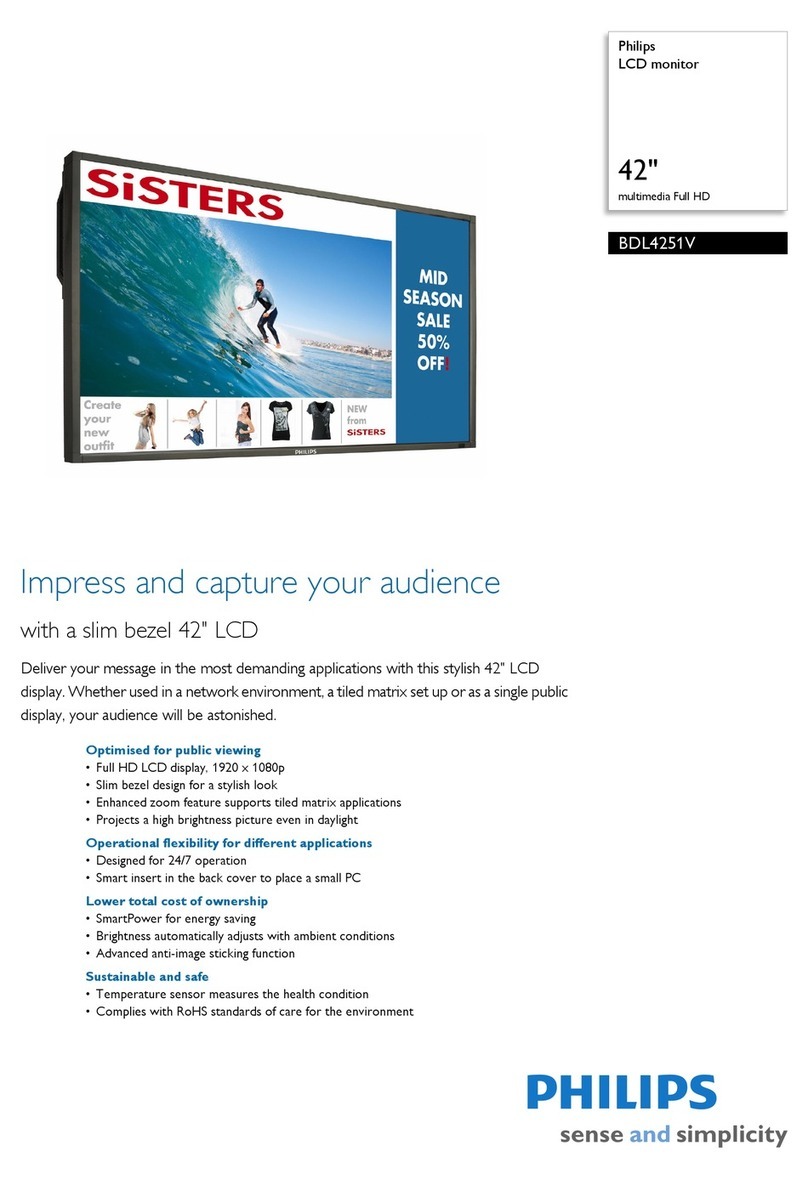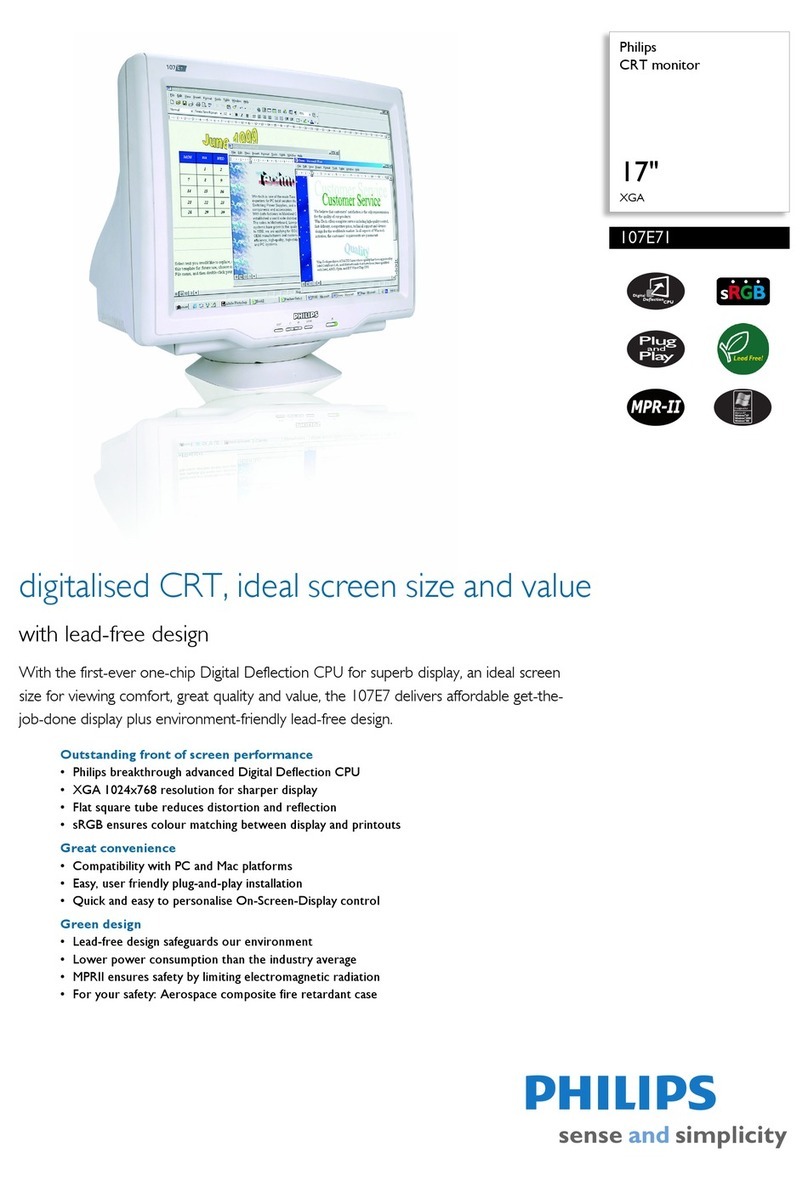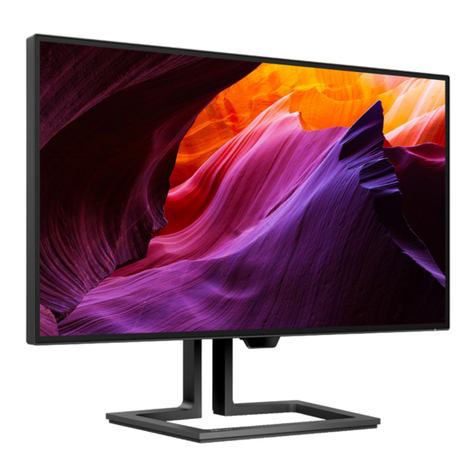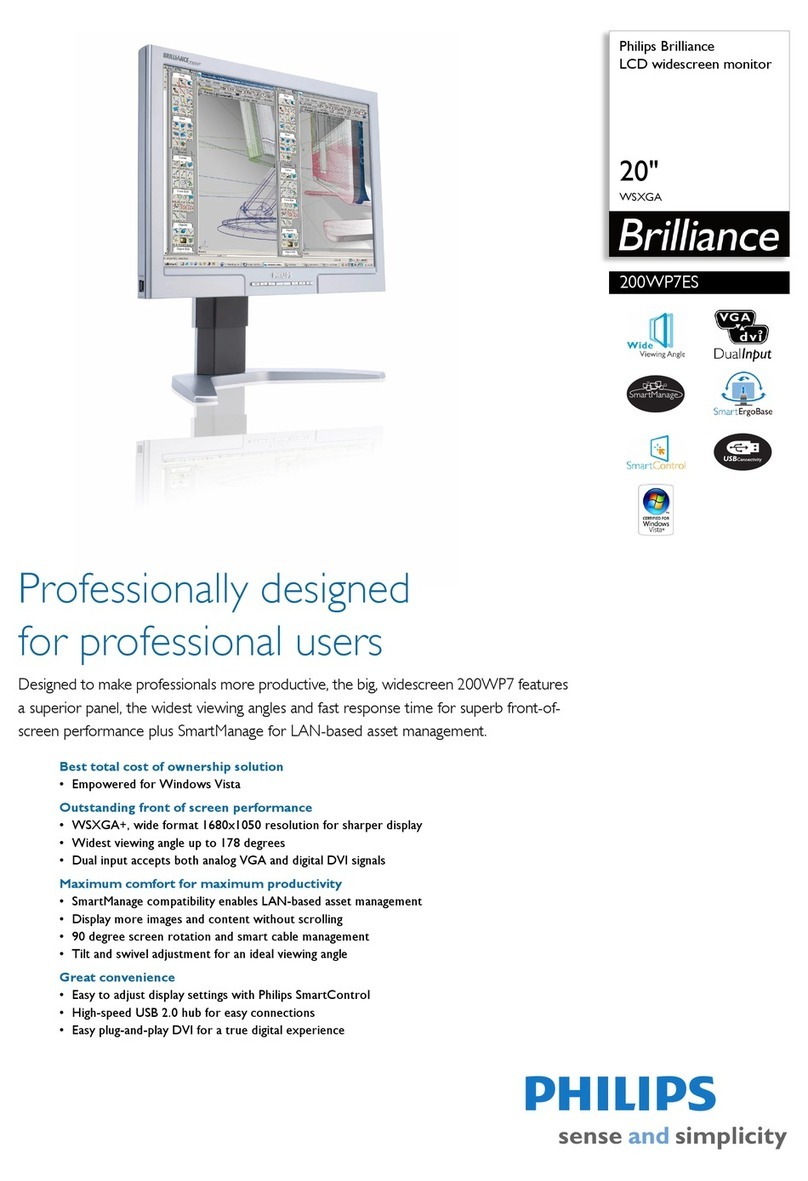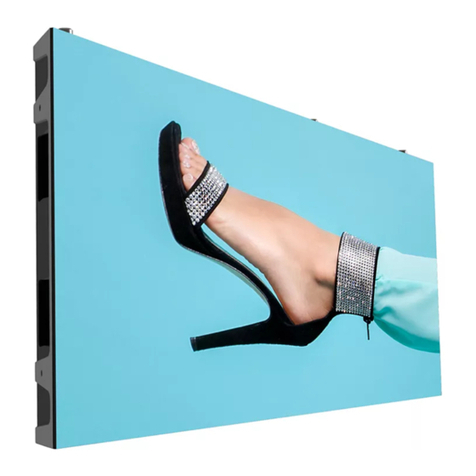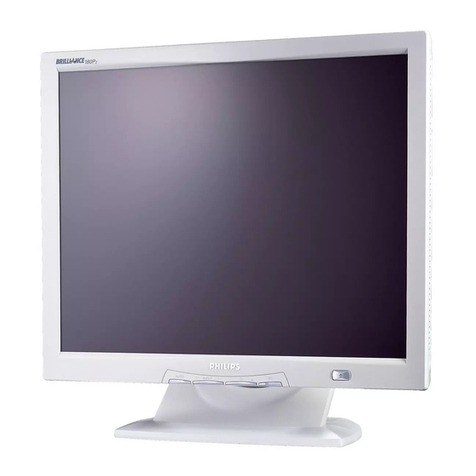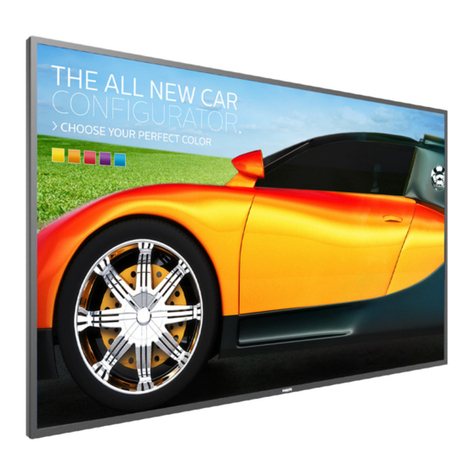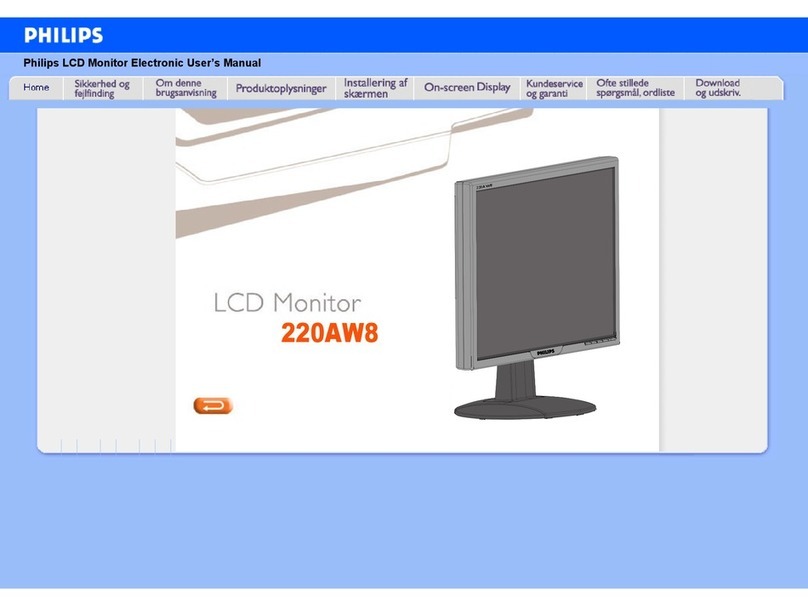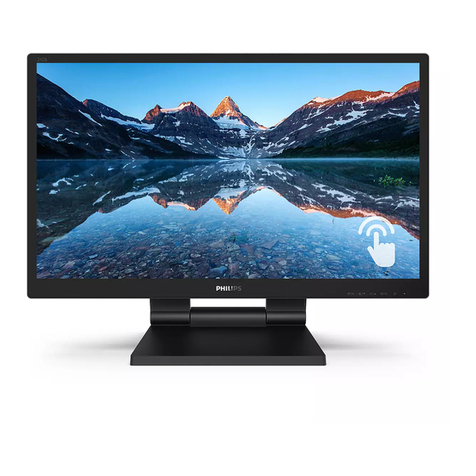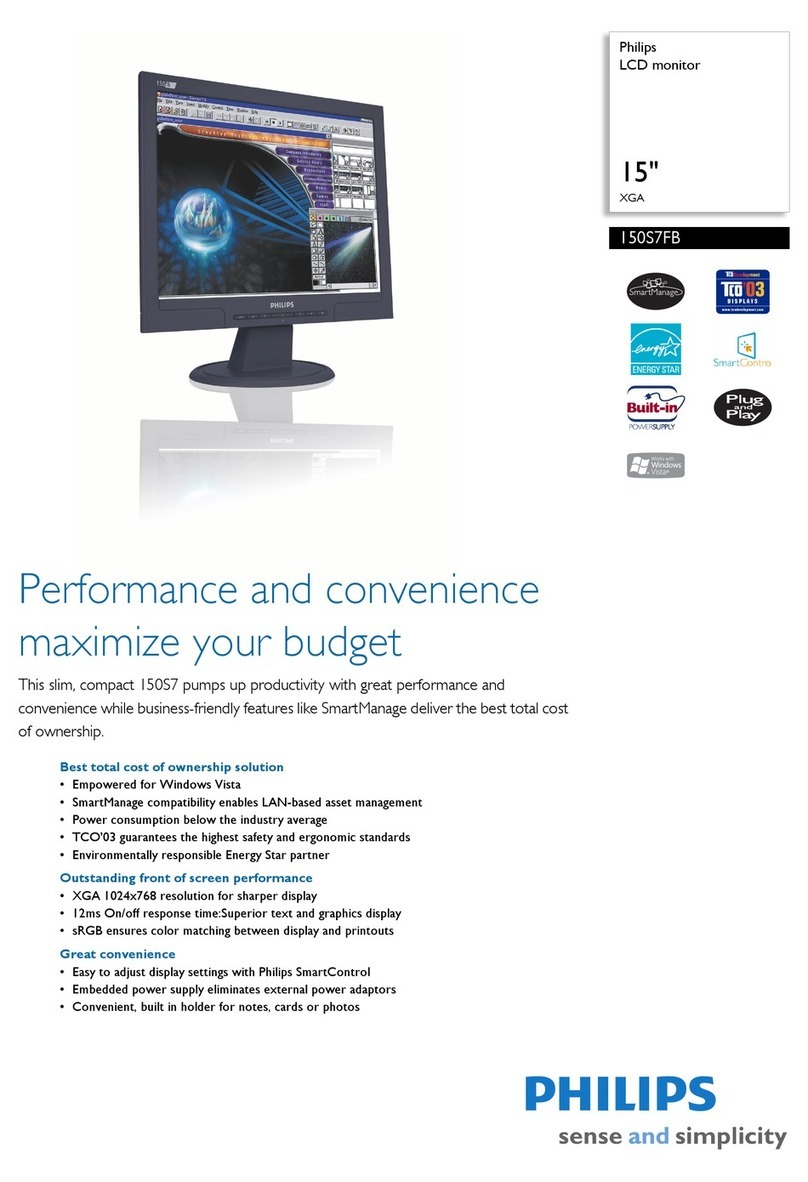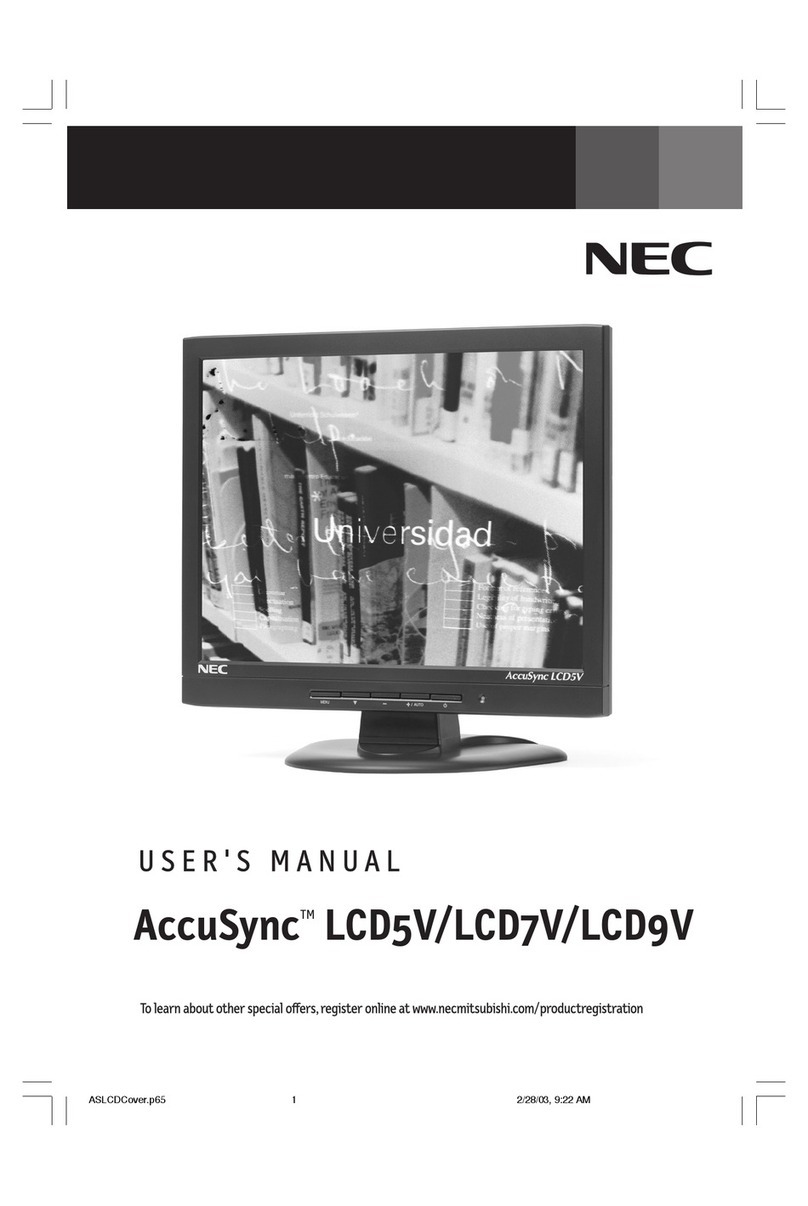
10 220SW9 L CD
Philips Pixel Defect Policy
D
Philips' Flat Panel Monitors Pixel Defect Policy
P hilips s trives to deliver the highes t quality products . W e us e
some of the industry's most advanced manufacturing proces ses
and practice stringent quality control. However, pixel or sub pixel
defects on the T F T LC D panels us ed in flat panel monitors are
sometimes unavoidable. No manufacturer can guarantee that all
panels will be free from pixel defects , but P hilips guarantees that
any monitor with an unacceptable number of defects will be
repaired or replaced under warranty. T his notice explains the
different types of pixel defects and defines acceptable defect
levelsforeachtype.Inordertoqualifyforrepairorreplacement
under warranty, the number of pixel defects on a T F T LC D panel
must exceed these acceptable levels. For example, no more than
0.0004% of the sub pixels on a 19" XGA monitor may be
defe ctive. F urthermore, P hilips s ets even higher quality
standards for certain types or combinations of pixel defects that
are more noticeable than others . T his policy is va lid worldwide.
Pixels and S ub pixels
A pixel, or picture element, is composed of three sub pixels in the
primary colors of red, green and blue. Many pixels together form
an image. When all sub pixels of a pixel are lit, the three colored
sub pixels together appear as a single white pixel. When all are
dark, the three colored sub pixels together appear as a single
black pixel. O ther combinations of lit and dark s ub pixels appear
as s ingle pixels of other colors .
Types of Pixel Defects
Pixel and sub pixel defects appear on the screen in different
ways. There are two categories of pixel defects and several types
of s ub pixel defects within ea ch c ategory.
Bright Dot Defects Bright dot defects appear as pixels or sub
pixels that are always lit or 'on'. That is, a bright dot is a sub-pixel
that stands out on the screen when the monitor displays a dark
pa tte rn. T he re a re the ty pe s of bright dot de fe cts :
One lit red, green or
blue s ub pixel
Two adjacent lit sub
pixels :
-Red+Blue=
Purple
- R ed + G reen =
Y ellow
-Green+Blue=
Cyan (Light Blue)
Three adjacentlit sub
pixels (one white
pixel)
Aredorbluebrightdotmustbemore
than 50 percent brighter than neighboring
dots while a green bright dot is 30 percent
brighter than neighboring dots .
Black Dot Defects Black dot defects appear as pixels or sub
pixels that are always dark or 'off'. That is, a dark dot is a
sub-pixel that stands out on the screen when the monitor
dis plays a light pattern. T hes e are the types of black dot defects
One dark sub pixel Two or three adjacent dark
sub pixels
Proximity of Pixel Defects
B ecaus e pixel a nd s ub pixels defects of the s ame type that a re
near to one another may be more noticeable, P hilips als o
specifies tolerances for the proximity of pixel defects
Pixel Defect Tolerances
Inordertoqualifyforrepairorreplacementduetopixeldefects
during the warranty period, a TF T LC D panel in a P hilips flat
panel monitor must have pixel or sub pixel defects exceeding the
tolerances lis ted in the following ta bles .
BRIGHT DOT DEFECTS ACCE PTAB LE
LEVEL
MODE L 220S W9
1 lit s ubpixel 3
2 adjacent lit subpixels 1
3 adjacent lit subpixels (one white pixel) 0
Distance between two bright dot defects* >25mm
Total bright dot defects of all types 3
BLACK DOT DEFECTS ACCE PTAB LE
LEVEL
MODE L 220S W9
1darksubpixel 5
2 a djacent dark s ubpixels 2
3 a djacent dark s ubpixels 0
Distance between two black dot defects* >15mm
Total black dot defects of all types 5
TOTAL DOT DEFECTS ACCEPTABLE
LEVEL
MODE L 220S W9
Totalbrightorblackdotdefects ofalltypes 5
Note:*1or2adjacentsubpixeldefects=1dotdefect
http://www.wjel.net

